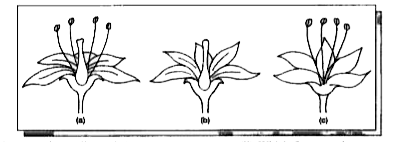Identify the following terms by matching them with appropriate description, write down the letter of the correct answer using each letter only once. A. Anode B. Cation C. lon D. Anion E. Cathode.
Negative electrode.
To solve the question, we need to identify which term matches the description "Negative electrode." Here’s a step-by-step solution:
Step 1: Understand the Terms
We have five terms:
- A. Anode
- B. Cation
- C. Ion
- D. Anion
- E. Cathode
Step 2: Define the Terms
- Anode: The electrode where oxidation occurs; it has a positive charge.
- Cation: A positively charged ion that moves towards the cathode.
- Ion: A charged particle, which can be either positive (cation) or negative (anion).
- Anion: A negatively charged ion that moves towards the anode.
- Cathode: The electrode where reduction occurs; it has a negative charge.
Step 3: Identify the Negative Electrode
From the definitions, we can see that:
- The cathode is defined as the negative electrode in an electrolytic cell.
Step 4: Match the Term
Thus, the term that matches the description "Negative electrode" is:
- E. Cathode
Final Answer
The letter of the correct answer is E.
---
We have five terms:
- A. Anode
- B. Cation
- C. Ion
- D. Anion
- E. Cathode
- Anode: The electrode where oxidation occurs; it has a positive charge.
- Cation: A positively charged ion that moves towards the cathode.
- Ion: A charged particle, which can be either positive (cation) or negative (anion).
- Anion: A negatively charged ion that moves towards the anode.
- Cathode: The electrode where reduction occurs; it has a negative charge.
From the definitions, we can see that:
- The cathode is defined as the negative electrode in an electrolytic cell.
Thus, the term that matches the description "Negative electrode" is:
- E. Cathode
The letter of the correct answer is E.
Topper's Solved these Questions
- BOOK - ICSECHAPTER - ELECTROLYSISEXERCISE - Additional questions22videos
ELECTROLYSIS
- BOOK - ICSECHAPTER - ELECTROLYSISEXERCISE - Unit Test Paper 5 - Electrolysis18videos
ELECTROLYSIS
- BOOK - ICSECHAPTER - ELECTROLYSISEXERCISE - ADDITIONAL QUESTIONS FOR PRACTICE49videos
ELECTROLYSIS
- BOOK - ICSECHAPTER - CHEMISTRY-2015EXERCISE - SECTION-II (40 Marks) Attempt any four questions from this Section.49videos
CHEMISTRY-2015
- BOOK - ICSECHAPTER - METALLURGYEXERCISE - UNIT TEST PAPER 6 - Metallurgy (Select the correct answer from the list A,B,C & given in each statement.)5videos
METALLURGY
Similar Questions
Identify the following terms by matching them with appropriate description, write down the letter of the correct answer using each letter only once. A. Anode B. Cation C. lon D. Anion E. Cathode.
Negative particleView SolutionIdentify the following terms by matching them with appropriate description, write down the letter of the correct answer using each letter only once. A. Anode B. Cation C. lon D. Anion E. Cathode.
Positive particleView Solution
Knowledge Check
- Question 1 - Select One
Select correct answers from the choices A, B, C, D which are given. Write down only the letter corresponding to the correct answer.
Which of the following oxides is amphoteric?AZnOBCuOCFeODCaO - Question 2 - Select One
Select correct answers from the choices A, B, C, D which are given. Write down only the letter corresponding to the correct answer.
Which salt forms coloured solution when dissolved in water?Acalcium chlorideBzinc carbonateCcopper sulphateDcalcium carbonate - Question 3 - Select One
Select correct answers from the choices A, B, C, D which are given. Write down only the letter corresponding to the correct answer.
A deep blue colour appears when excess of ammonium hydroxide is added to a solution containing the cation:
A I 3 + ; F e 2 + ; Zn2+;Cu^(2+) ;AAI3+BFe2+CZn^(2+)DCu^(2+)
Identify the following terms by matching them with appropriate description, write down the letter of the correct answer using each letter only once. A. Anode B. Cation C. lon D. Anion E. Cathode.
Positive or negative particleView SolutionIdentify which of the following terms matches with the appropriate descriptions 1 to 5
A: Hydracid (B) Monobasic acid (C ) Less volatile acid ( D) Weak acid (E ) Tribasic acid (F ) Dibasic acid (G ) More volatile acid
1. An acid having basicity 1 and having only one replacement hydrogen ion per molecular of the acid.
2. An acid which dissociates to give a low concentration of H+ ions
3. An acid containing hydrogen and a non-metallic element other than oxygen.
4. The type of acid which generally displaces another acid when the acid is heated with a salt
5. The type of acid which reacts with a base to give an acid salt and a normal saltView SolutionStudy the three flowers (a), (b) and (c) in the following figures. Then answer the questions (by writing letter )

Which flower makes pollen only?View SolutionStudy the three flowers (a), (b) and (c) in the following figures. Then answer the questions (by writing letter )

Which flower makes eggs only?View SolutionMatch the following terms in Column-I with their descriptions by writing the appropriate letters from Column-II.
Column-I
A) A molecule used to carry foreign
B) A rapid way to amplify DNA
C) A way to separate DNA fragments
D) Molecular scissors
E) A gene sequence from more than one origin
Column - II
I) Restriction enzymes genes into bacteria
II) Recombinant DNA in the laboratory
III) PCR based on their size
IV) Vector
V) Gel electrophoresisView Solution

